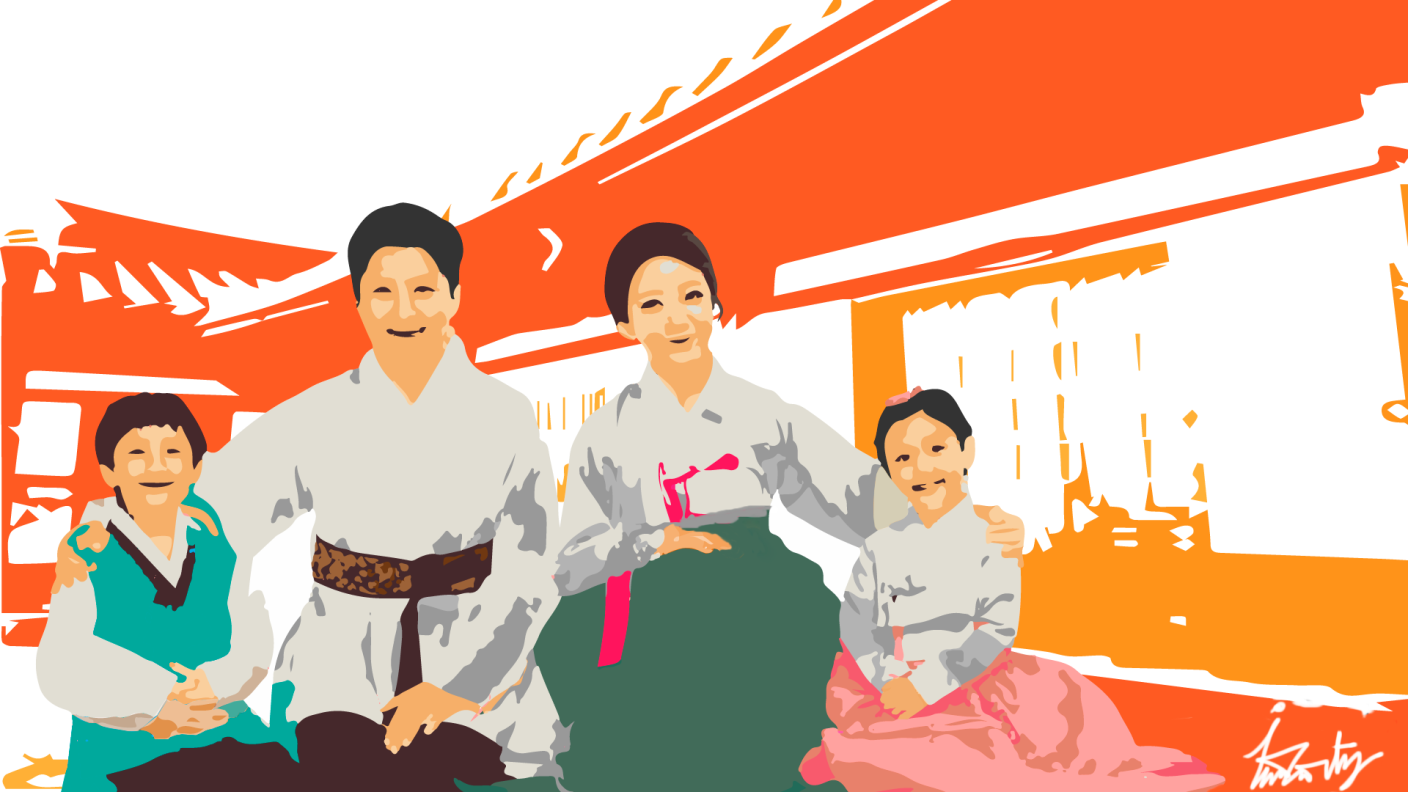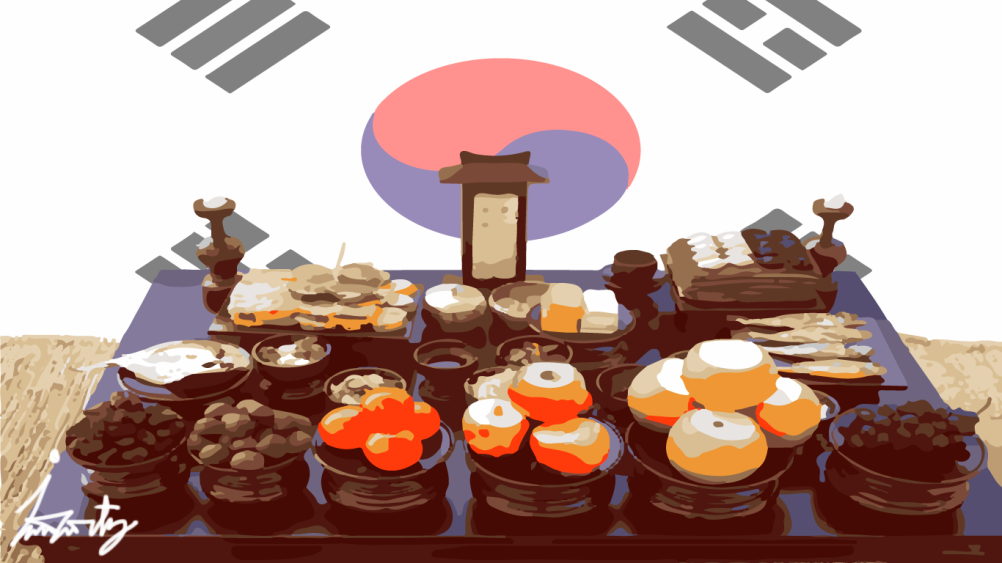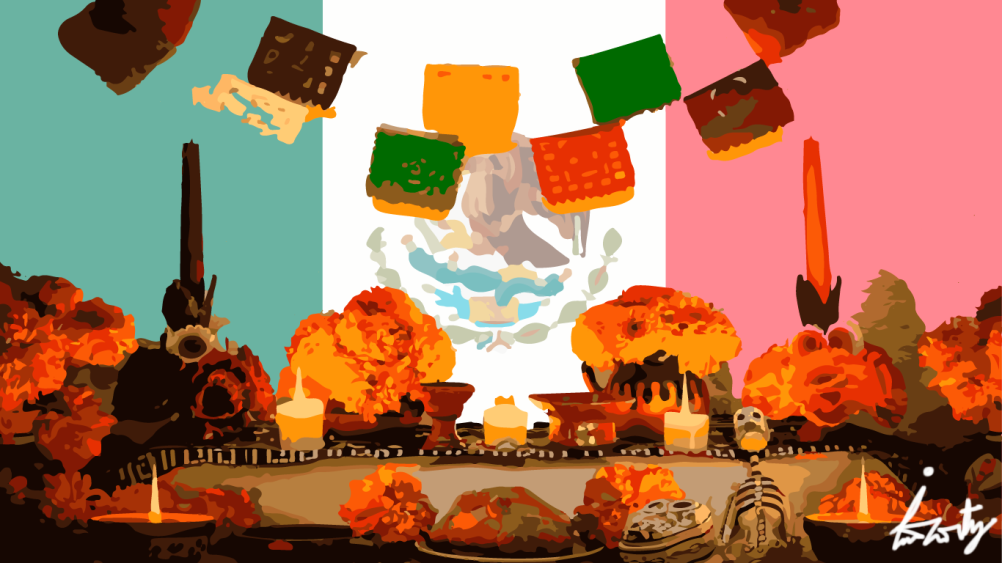- 한국어
- English
- 日本語
- 中文
- العربية
- Español
- Français
- Deutsch
- Pусский
- Tiếng Việt
- Indonesian
By Honorary Reporter Iran Tavera from Mexico
Illustrations = Iran Tavera

A Korean family wearing the traditional attire Hanbok (Iran Tavera)
Korea and Mexico, despite being so far apart geographically, both have a tradition of remembering and respecting ancestors with affection and respect on select holidays.
Chuseok (Korean Thanksgiving) features three days of celebration and falls on the 15th day of the eighth month under the lunar calendar. During this time, people gather with family and honor their ancestors. This holiday originated with farmers grateful for their harvests honoring their ancestors and sharing their harvests with friends and family.
On Chuseok Day, Koreans perform the ritual charye. An altar is prepared with plates of rice, vegetables, fruit, meat, rice cakes and products from the region for ancestors and people bow to the latter. After the ritual, people visit the graves of their ancestors to perform the ritual seongmyo, which offers their respects to their ancestors. Another traditional rite is beolcho, or maintaining and cleaning an ancestor's tomb and headstone.

A charye table (Iran Tavera)
In Mexico, the Day of the Dead is when people honor their ancestors. This tradition is celebrated from Nov. 1-2 and consists of remembering the deceased through an altar and visiting their graves. The altar is the most important part of the day, being held to "be close to our dead and hold dialogue with their memory," according to the Mexican government. Each Mexican home has an altar decorated with flowers, candles and food as well as objects the deceased liked. Like Koreans during Chuseok, Mexicans visit their ancestors' graves to maintain and clean them.

Day of the Dead in Mexico. (Iran Tavera)
enny0611@korea.kr
*This article is written by a Korea.net Honorary Reporter. Our group of Honorary Reporters are from all around the world, and they share with Korea.net their love and passion for all things Korean.